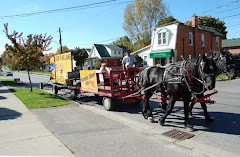 I wonder if widdling nine managers down to five will mean that we get our 20 minute service back on the bus. I doubt it. I'll let the press release speak for itself.
I wonder if widdling nine managers down to five will mean that we get our 20 minute service back on the bus. I doubt it. I'll let the press release speak for itself.GUELPH, ON, June 29, 2010 – The City of Guelph is implementing a new functional model and realigning its organizational structure so that it's better positioned to respond to the complex issues of a growing single-tier municipality, better enabling it to deliver on Council and community priorities.
The changes—which affect the upper tier of the organization—were announced today. The reorganization reduces the administrative structure from nine departments to five, and distributes executive oversight to four Executive Directors who, along with the CAO, will share responsibility for overseeing key operating and administrative functions.
"Part of my mandate as CAO when I joined the City of Guelph in 2007 was to put a new organizational structure in place that best positions the City to be able to deliver on community priorities," says Chief Administrative Officer Hans Loewig. "We made some minor, initial changes in 2007, and this reorganization is the final leg of that change. Its intent is to reduce the size of the senior administrative structure and make us more responsive, more agile. It’s neither a cost-saving measure nor a downsizing exercise.”
City functions are now grouped under five departments: Operations and Transit, led by Executive Director Derek McCaughan; Community and Social Services, led by Executive Director Ann Pappert; Planning, Engineering and Environmental Services, led by Executive Director Janet Laird; Human Resources and Legal Services led by Executive Director Mark Amorosi; and the Office of the CAO, led by Chief Administrative Officer Hans Loewig.
Users of City services including residents, businesses and visitors will notice the difference, as the reorganization is intended to bring more clarity and responsiveness to service delivery.
The new model will allow for closer working relationships between staff and Council, which will create an environment in which staff can be more responsive than they could in a structure where everything was channelled through the CAO's Office. "That type of structure becomes slow and increasingly cumbersome as the organization—and our community—grows," says Loewig.
The new model is based on research, a study of the nuances of the organization, and other practices in municipal services, is future focused, and is in the spirit of continuous improvement in delivery of services to the Guelph community.


























